
Globally, insurers implemented solutions to improve onboarding, including acceleration of digital journeys, adoption of electronic applications and signatures, and reliance on remote sales tools, as well as the use of data analytics to target specific client needs. Accelerated Underwriting (AUW) solutions proliferated as insurers struggled to acquire traditional underwriting requirements, such as lab work and medical exams.
Varied AUW approaches included:
- Increased face amounts (e.g., $1 million -$2 million)
- Expanded use of alternative data sources to be more predictive
- Increased use of statistical models
- Enhanced use of technology to intake, process, and interpret alternative data
- Addition of “good health statements” or COVID-19-related questions to underwriting questionnaires
- Adjustments to age/limit amounts
3. Lead generation initiatives engaged consumers in new ways.

Lead generation adaptations varied from market to market as product sales shifted to new distribution channels. In China, for example, insurers partnered with third-party administrators (TPAs) to target clients, while South African insurers forged new distribution relationships to gain access to client databases. Canadian carriers expanded direct-to-consumer offerings and increased marketing efforts and partnerships.
Markets such as Italy saw fully digital lead generation through social media to market term life and disability products. Meanwhile, the use of data and analytics to identify the right customers for the right products accelerated globally. RGA noted that working with TPAs or new partners reflects an alignment between the most suitable products and good risk management.
4. Insurers fast-tracked digital product offerings.

Globally, the remote sales environment drove digital delivery of insurance products. The main product features were primarily developed in response to remote sales. In Asia, this digitalization was reflected in the expanded use of e-underwriting tools and collaborations with insurtechs. One such initiative intakes digital health data to triage the underwriting process and provide decisions. In the U.S., insurers invested in educating consumers online and enabling web-based applications, with the ability to switch to an agent virtually (or in-person) to complete the process.
New product development initiatives included COVID-19 coverages with hospital benefits, especially in Asia. At the same time, some insurers resorted to increasing premiums and/or suspending product sales to offset risk as COVID-19 cases rose. Insurers also introduced more affordable products to address budget concerns or loss of income.
Product innovation varied. In South Africa, for example, insurers offered some limited risk products, such as funeral expense coverage with a waived exclusion period for new policies and for temporary disability income with shorter (or no) waiting periods. In Italy, insurers developed products for bancassurance and group life channels to support consumer needs during the pandemic and to build brand awareness and brand loyalty.
5. Underwriters adjusted to new processes, new guidelines, and new risks.

Underwriting COVID-19 patients and managing-related claims posed a significant challenge globally. Meanwhile, consumers’ inability or reluctance to go to hospitals and doctors’ offices or to agree to blood testing limited access to traditional medical underwriting evidence. As a result, the use of accelerated underwriting (AUW) solutions using alternative evidence sources and e-applications increased in many markets.
Canadian insurers implemented temporary changes to age and amount limits and expanded the use of AUW frameworks, making greater use of Attending Physician Statements (APS). In the U.S., insurers gave applicants the choice to delay processing to wait for medical underwriting and a better rate. And in the U.K., some companies waived certain evidence requirements; however, those who opted to carry on as usual and asked for required evidence later fared better overall.
Insurers in markets such as South Africa, Spain, Italy, and France introduced new questionnaires and forms to filter out high-risk applicants. Other interesting approaches addressed how to handle unvaccinated lives in South Africa.
6. Claims assessors adjusted to higher volumes and challenges with collection and verification.

Similar to underwriting practices, claims assessment guidelines and processes had to be adjusted in some markets. Many insurers relaxed requirements as way to ease the burden of COVID-19-related claims.
Claims decisions were often delayed due to backlogs and the inability to process evidence and conduct thorough investigations. Some markets adapted by conducting basic investigations during lockdown periods and a more thorough investigation once things opened up.
Increased claims volume coupled with remote and hybrid work environments made document verification and claims investigation particularly difficult, creating delays in payment. Insurers continue to seek solutions to resolve these challenges, presenting an opportunity to innovate and leverage technology to digitalize the process.
7. The impact of COVID-19 on pricing remains a key concern for the industry.

All markets are closely monitoring data to evaluate potential pricing adjustments needed to maintain sustainable business. The ability to be open and agile with pricing rate changes is key. COVID-19 affected each market differently, so pricing needs to account for local impacts and healthcare infrastructure. For example, India’s higher COVID-19 mortality rates required inevitable premium adjustments for product sustainability. Long COVID is also playing a key role in pricing assumptions for many markets, as it directly affects hospitalizations, healthcare costs, morbidity, and mortality.
The changes to the insurance industry brought on or accelerated by the COVID-19 pandemic have transformed the life and health sector, and will lead to ongoing evolution in lead generation, consumer engagement, product development, underwriting, claims, and pricing. Insurers must view lessons already learned with an eye toward continued innovation and future growth.



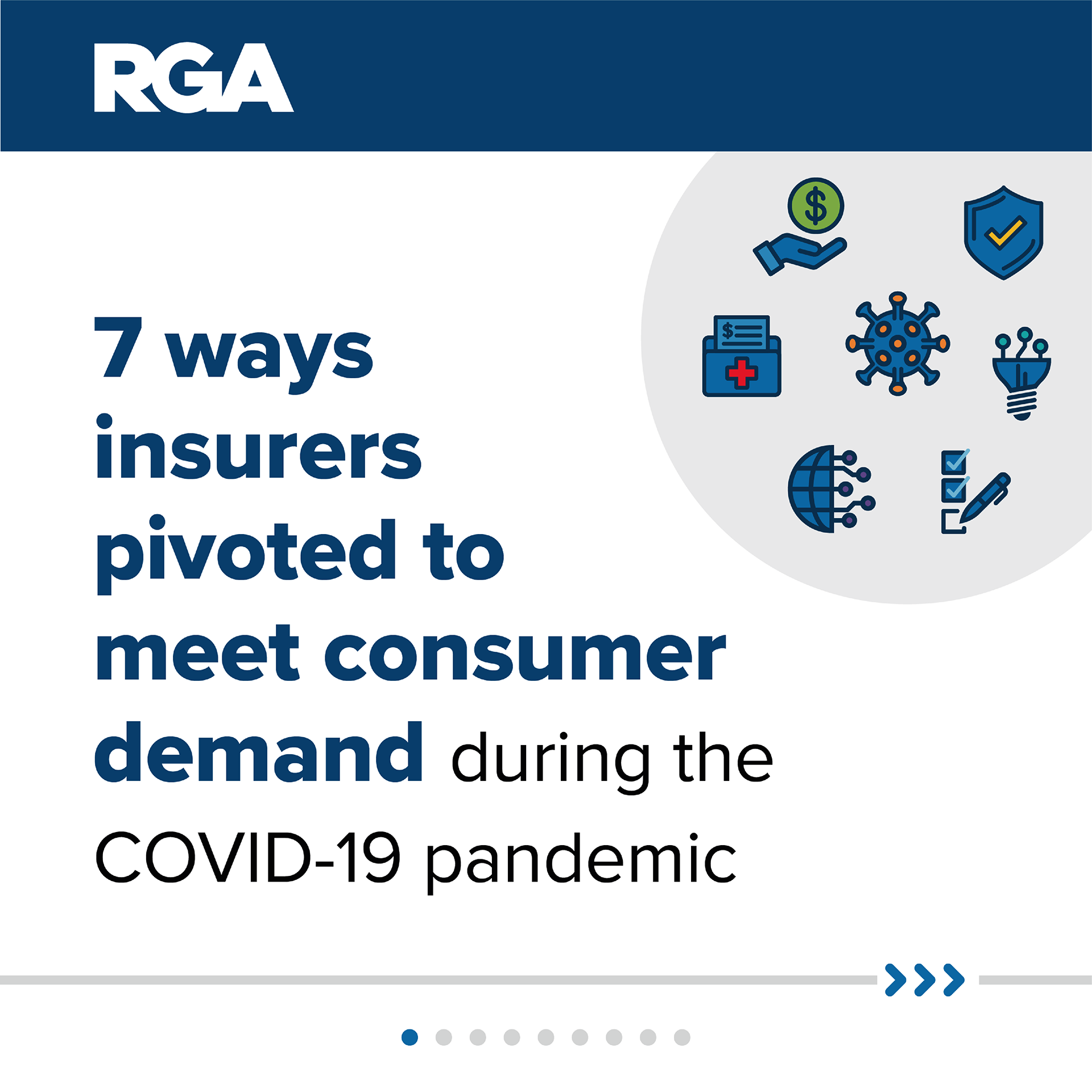
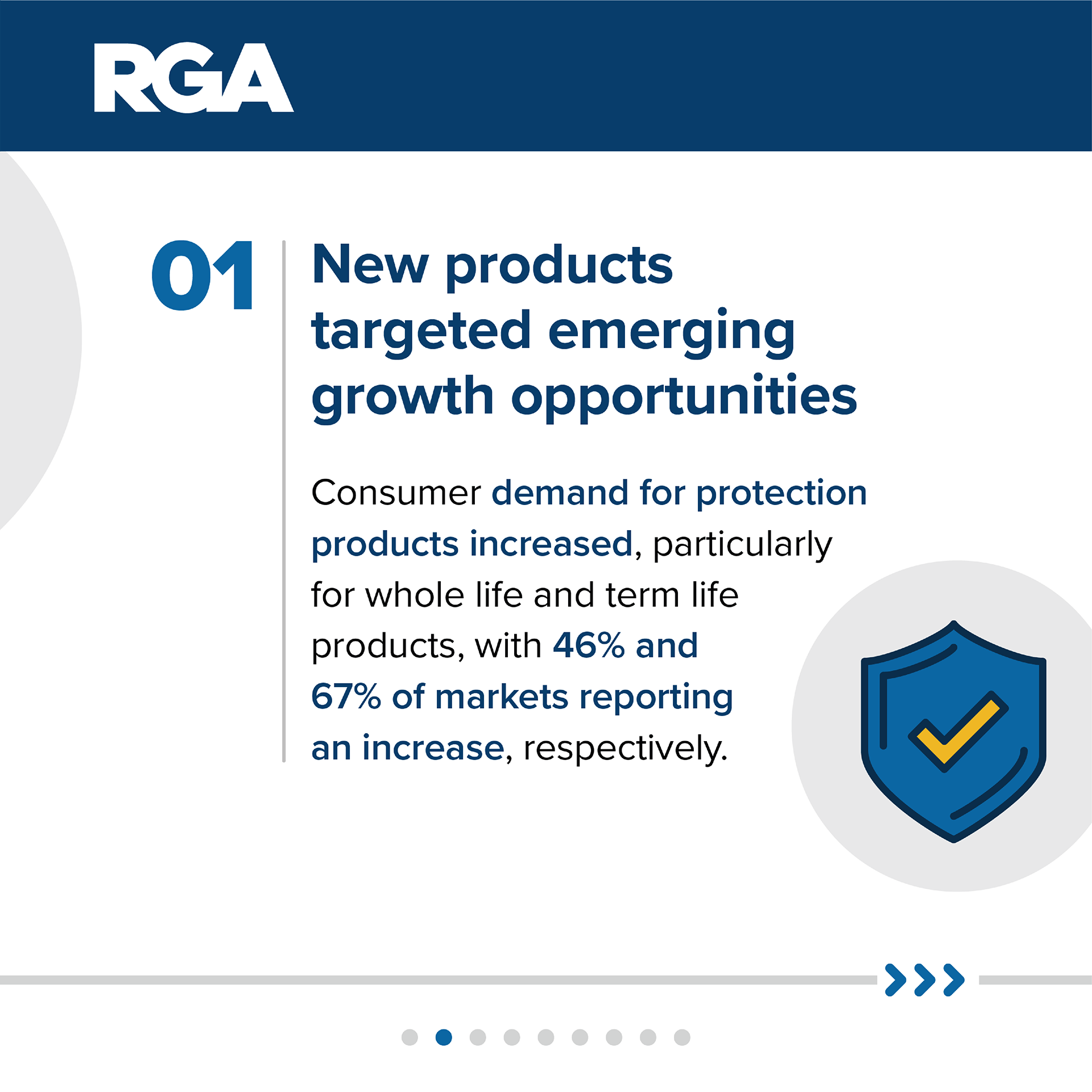
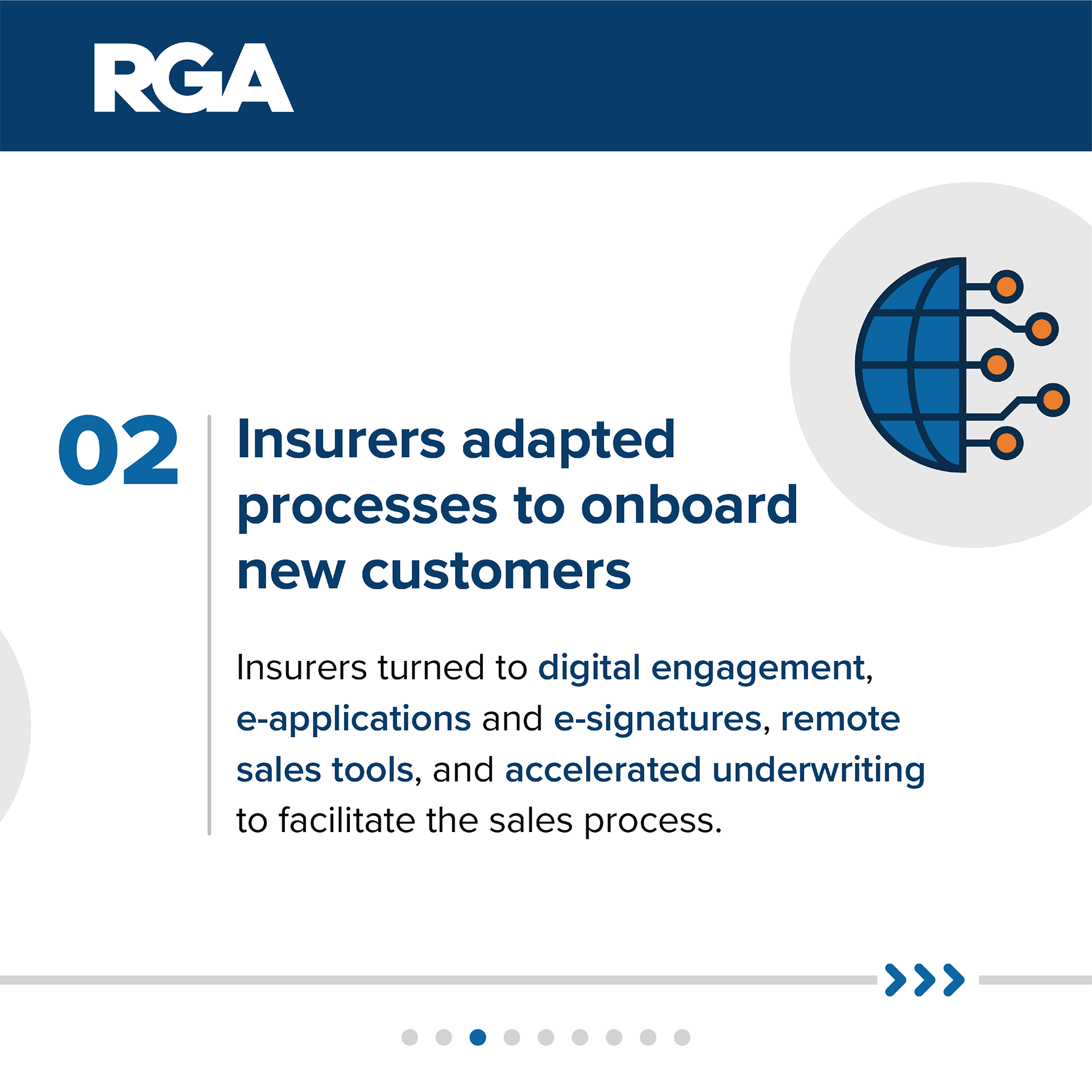
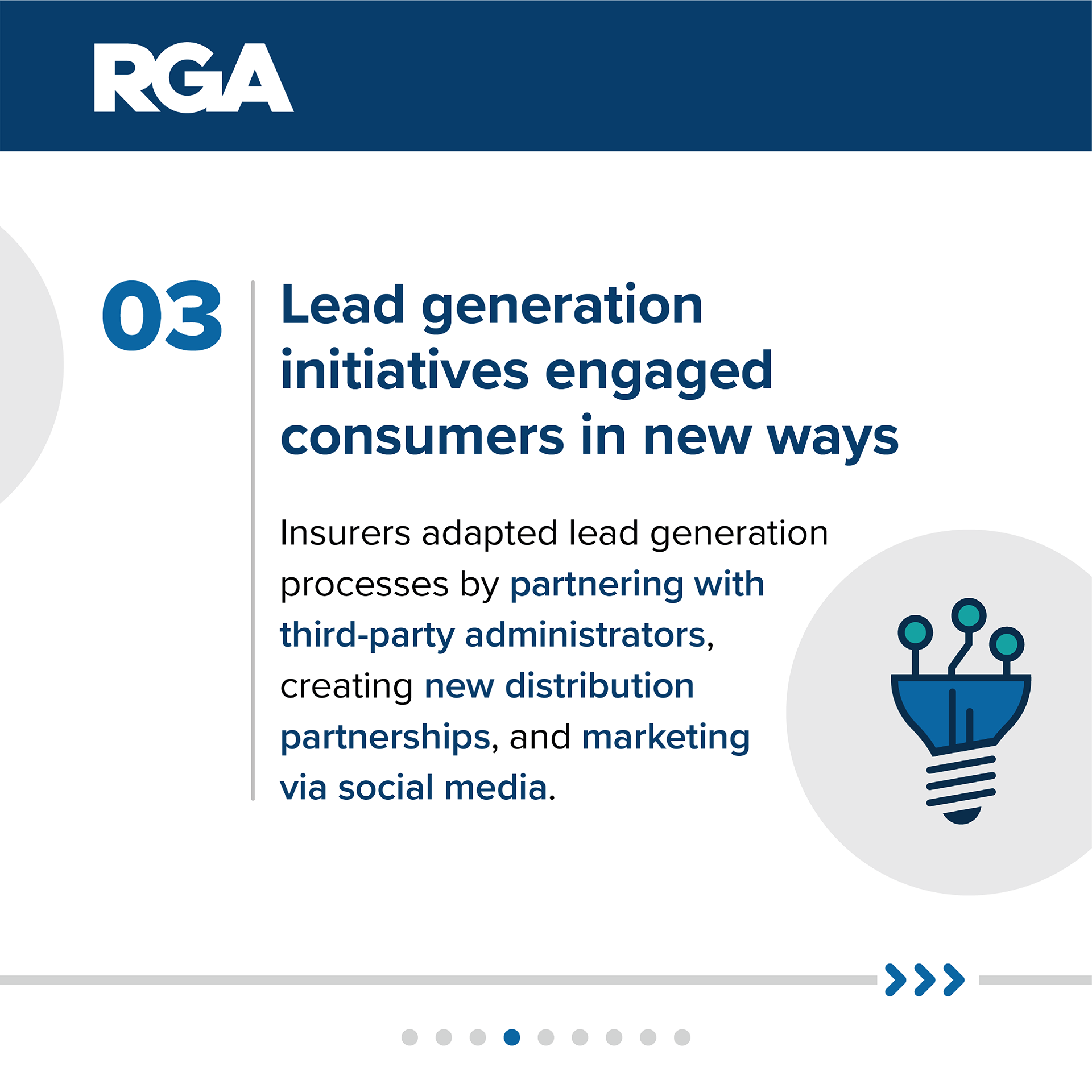
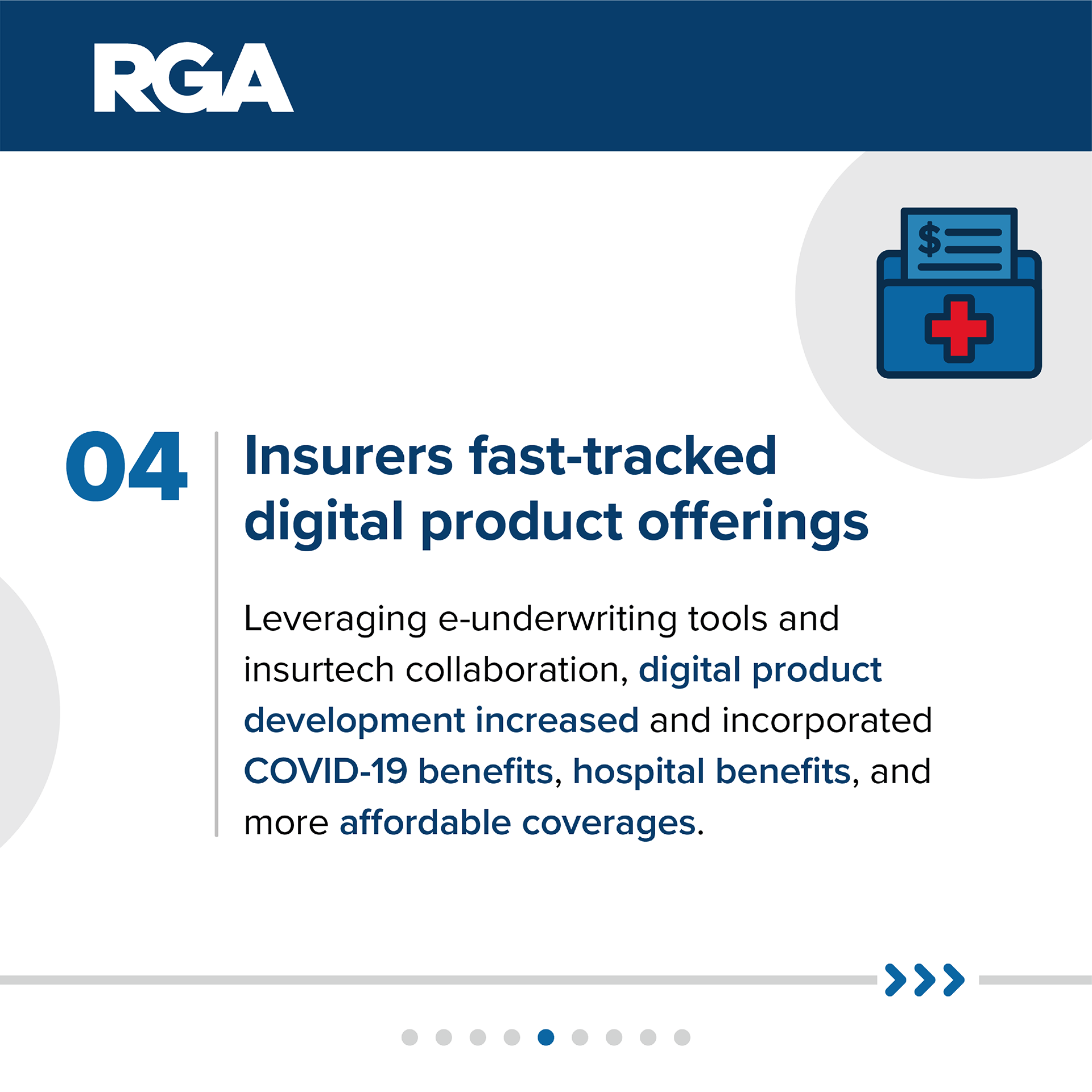
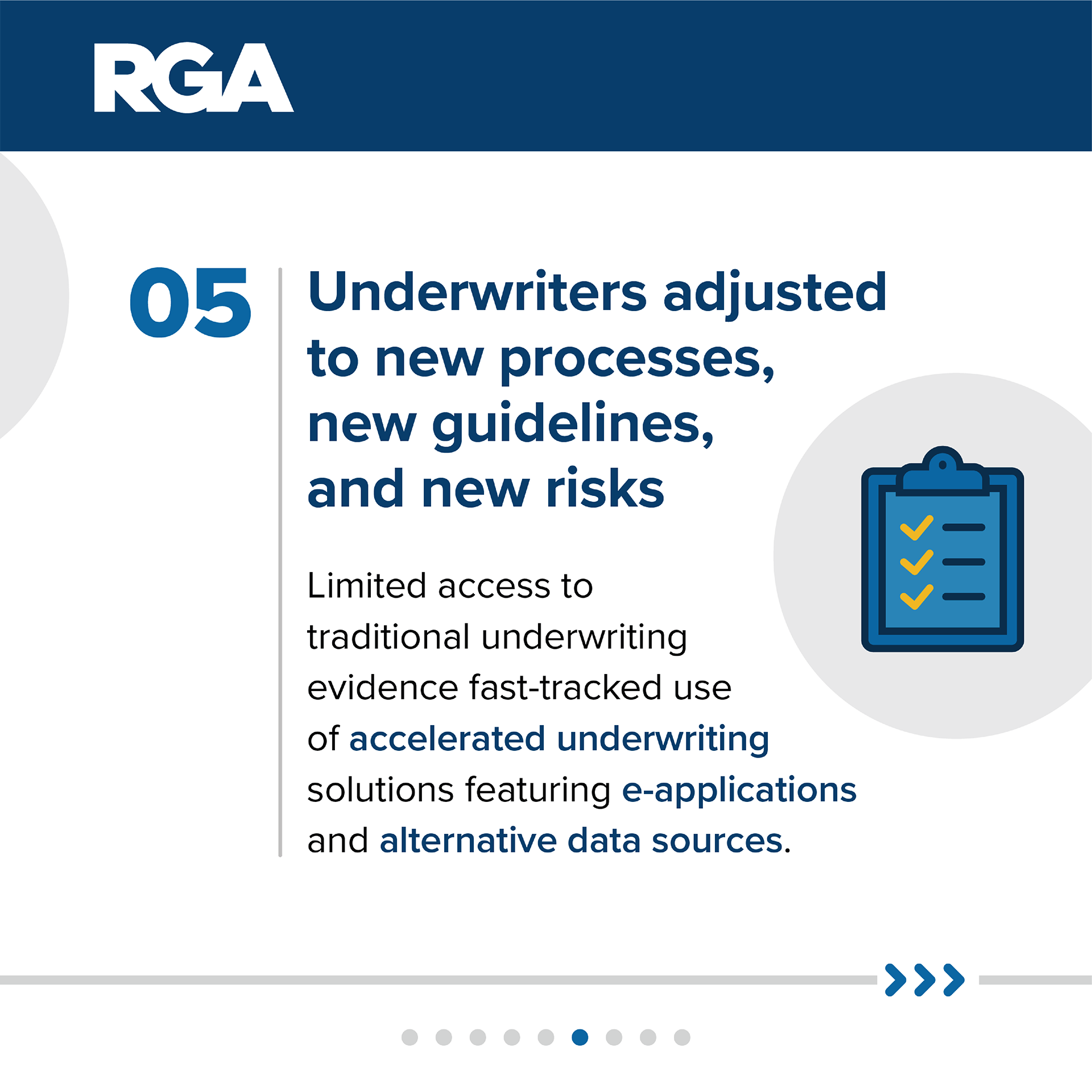
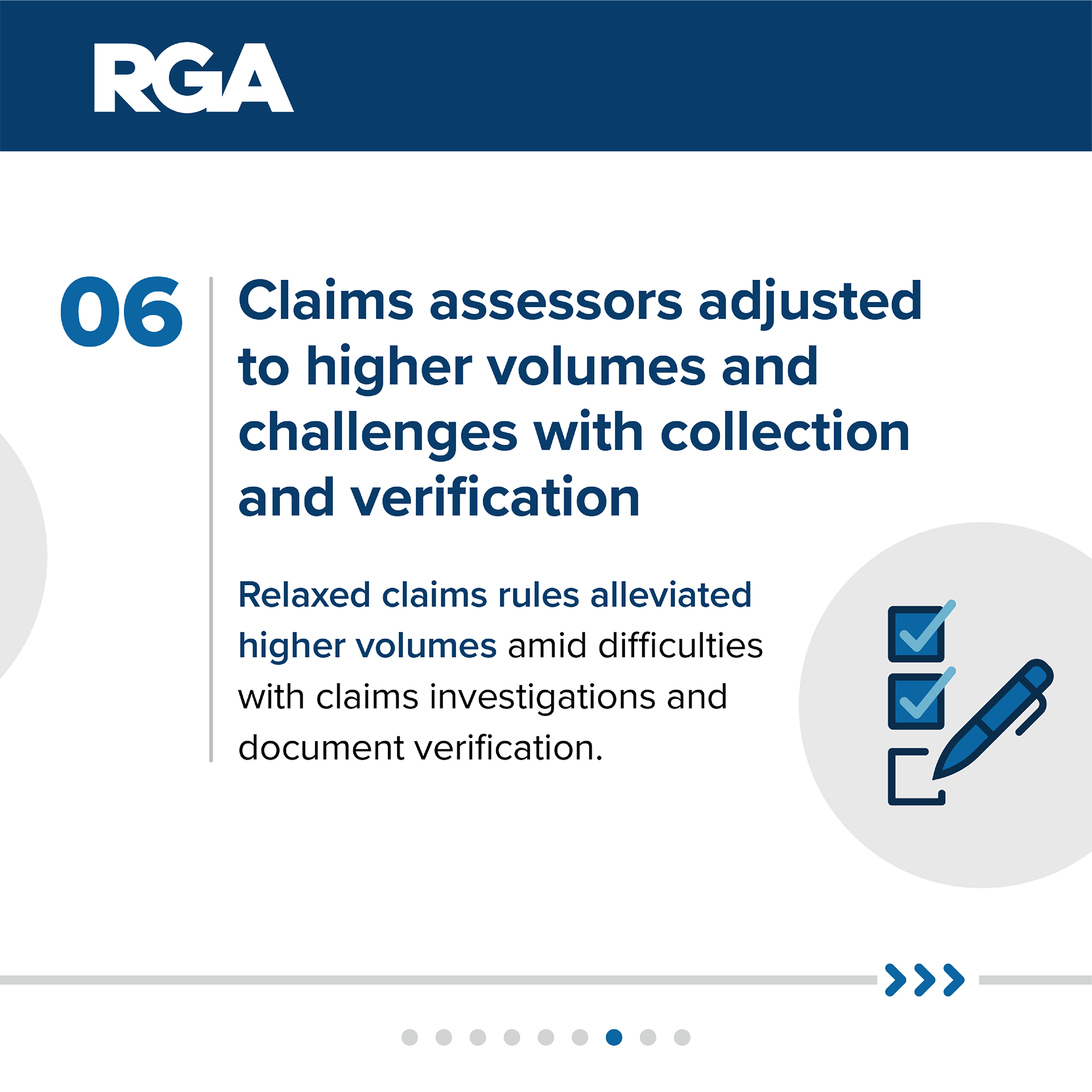
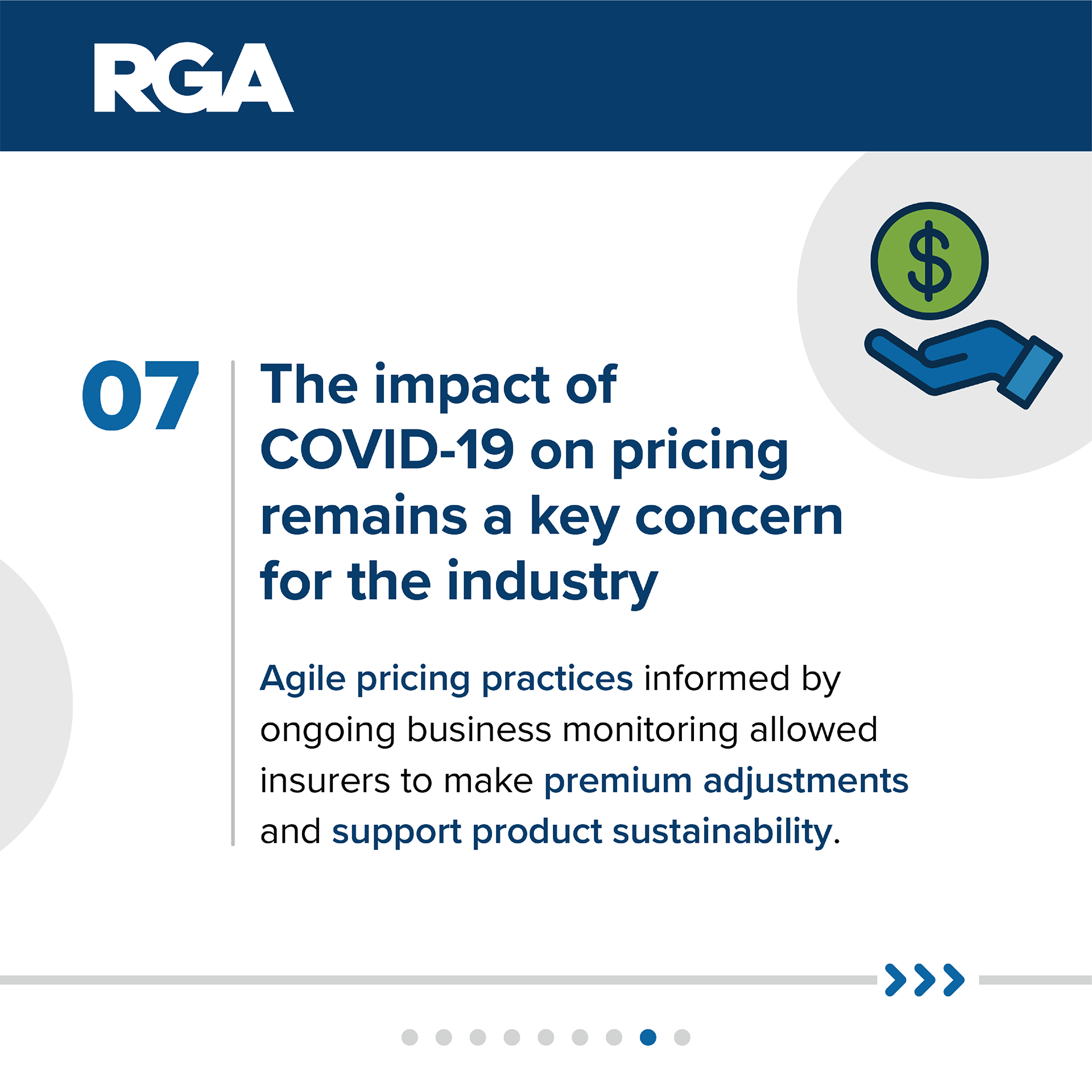









5d8a64c4-40be-43b0-a692-a38f20063213.png?sfvrsn=c848acc3_3)
